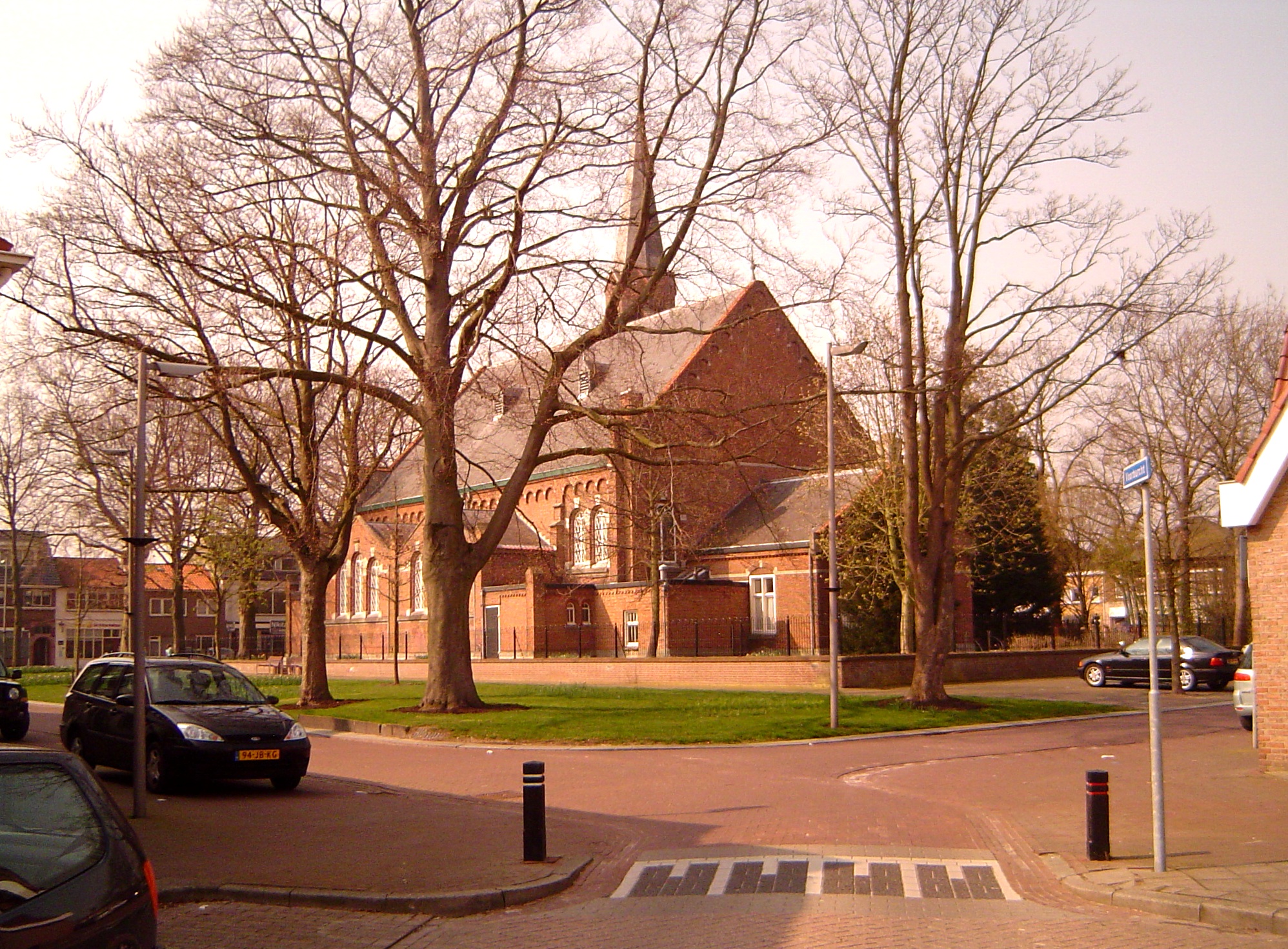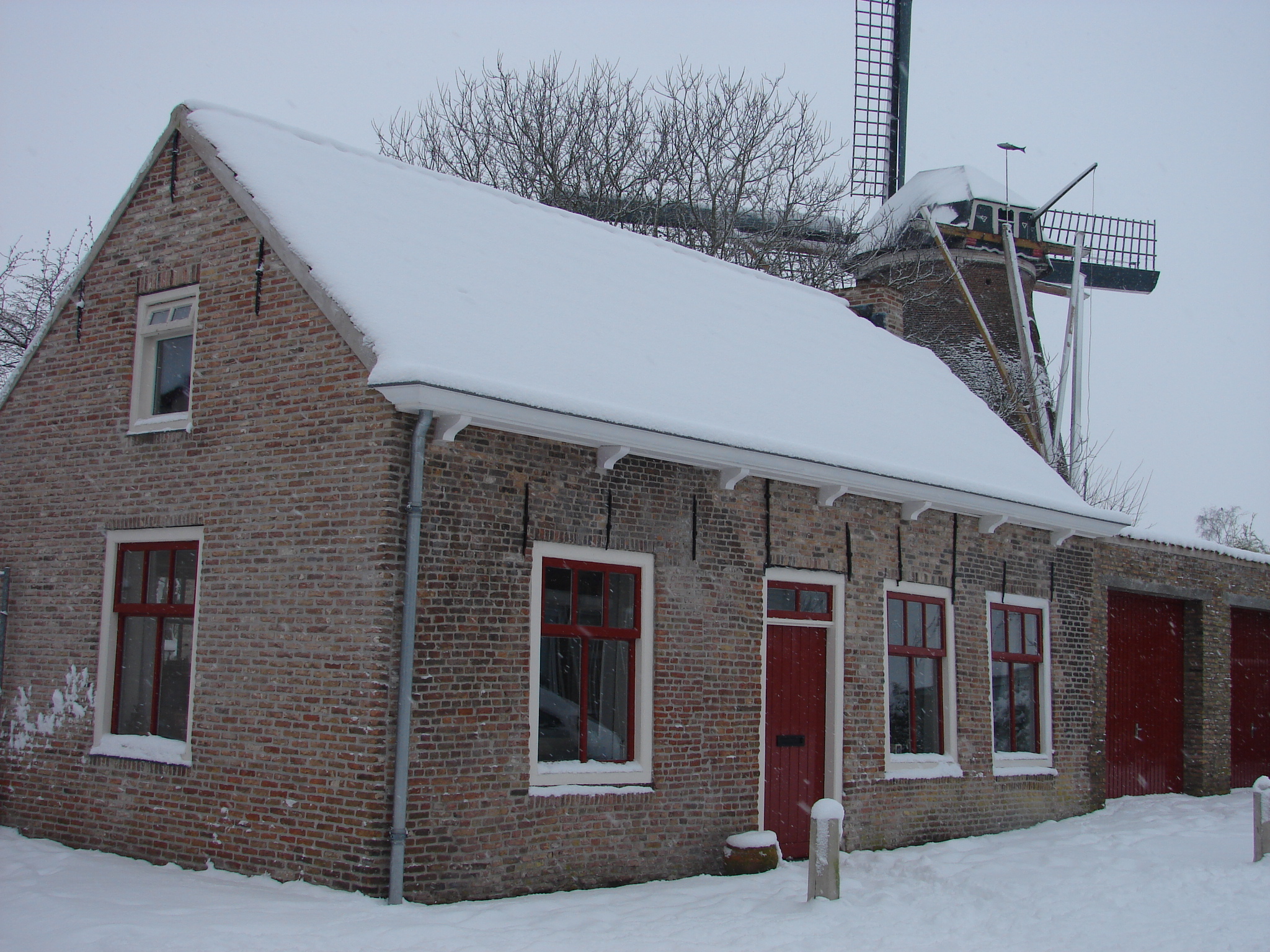|
Zaamslag
Zaamslag is a village in the Netherlands, Dutch province of Zeeland. It is a part of the municipality of Terneuzen, and lies about 28 km southeast of Vlissingen. Zaamslag was a separate municipality until 1970, when it was merged with Terneuzen. Before being a municipality, it was a significant village in the Medieval Era (see below), and is a very important archaeological site. 'Stropielekkers' nickname The inhabitants of Zaamslag are called 'Stropielekkers' ('syrup lickers'). This sort of nickname is a common tradition; the inhabitants of nearby Axel are called 'Aerpelkappers'. The origin of the nickname lies in the 19th century: around 1870, a retailer called Valk had a simple shop in the village. He bought barrels of syrup and brought them to the village on a cart; one day a barrel leaked, and the children of the village started gathering syrup. The incident was the start of this nickname tradition. History and archaeological evidence Possible origins The first signs ... [...More Info...] [...Related Items...] OR: [Wikipedia] [Google] [Baidu] |
Zaamslag Castle
Zaamslag Castle was a Motte-and-bailey castle in Zeelandic Flanders, the motte (artificial hill) remains. It is called Torenberg. Location Zaamslag Island When Zaamslag Castle was built in the 12th century, its location was part of the County of Flanders. The Western Scheldt or Honte was a sea arm that was not yet fully connected to the Scheldt, which flowed to the North Sea via the Eastern Scheldt. The coast of Flanders consisted of Fens with sandy ridges in between. On some of these ridges near Ghent's north and northeast in the year 1000, a population began to grow. One of these was Zaamslag's height, which can still be seen in the village. Aendijcke and De Kraag were the others. After that, a polder was created. As a result, Zaamslag Island was made. It had three villages. Zaamslag was the largest, Othene probably the oldest, and there was Aendijcke. Ghenderdijcke and Campen were hamlets. The island measured about 8 kilometers from east to west, and 9 kilometers from n ... [...More Info...] [...Related Items...] OR: [Wikipedia] [Google] [Baidu] |
Zaamslag Rond 1660
Zaamslag is a village in the Dutch province of Zeeland. It is a part of the municipality of Terneuzen, and lies about 28 km southeast of Vlissingen. Zaamslag was a separate municipality until 1970, when it was merged with Terneuzen. Before being a municipality, it was a significant village in the Medieval Era (see below), and is a very important archaeological site. 'Stropielekkers' nickname The inhabitants of Zaamslag are called 'Stropielekkers' ('syrup lickers'). This sort of nickname is a common tradition; the inhabitants of nearby Axel are called 'Aerpelkappers'. The origin of the nickname lies in the 19th century: around 1870, a retailer called Valk had a simple shop in the village. He bought barrels of syrup and brought them to the village on a cart; one day a barrel leaked, and the children of the village started gathering syrup. The incident was the start of this nickname tradition. History and archaeological evidence Possible origins The first signs of settlem ... [...More Info...] [...Related Items...] OR: [Wikipedia] [Google] [Baidu] |
Zaamslag - Raadhuis 1
Zaamslag is a village in the Dutch province of Zeeland. It is a part of the municipality of Terneuzen, and lies about 28 km southeast of Vlissingen. Zaamslag was a separate municipality until 1970, when it was merged with Terneuzen. Before being a municipality, it was a significant village in the Medieval Era (see below), and is a very important archaeological site. 'Stropielekkers' nickname The inhabitants of Zaamslag are called 'Stropielekkers' ('syrup lickers'). This sort of nickname is a common tradition; the inhabitants of nearby Axel are called 'Aerpelkappers'. The origin of the nickname lies in the 19th century: around 1870, a retailer called Valk had a simple shop in the village. He bought barrels of syrup and brought them to the village on a cart; one day a barrel leaked, and the children of the village started gathering syrup. The incident was the start of this nickname tradition. History and archaeological evidence Possible origins The first signs of settlem ... [...More Info...] [...Related Items...] OR: [Wikipedia] [Google] [Baidu] |
Jona Willem Te Water
Jona Willem te Water (1740–1822) was a professor at Leiden University. He was a man of influence in the Dutch Reformed Church, in many learned societies, in academic theology, and in Dutch historiography. Early life Family Jona Willem te Water was born to Willem te Water and his wife Sara van Middelhoven, daughter of Jona van Middelhoven (1685–1770). They lived in Zaamslag, Zeelandic Flanders, which was and still is a rather isolated place in the Netherlands. Of the couple's many children five sons and a daughter reached maturity. Jona Willem's father Willem (1698–1764) had studied theology. In 1725 he became minister in Zaamslag. In 1742 he became minister in Axel. This was not a good career. It might have been caused by lack of the required oratory skills. In his free time Willem wrote historical studies. He wrote some works about church history, like his De Historie der hervormde kerk te Gent. In more theological works, he displayed his orthodox views. In 176 ... [...More Info...] [...Related Items...] OR: [Wikipedia] [Google] [Baidu] |
Terneuzen (municipality)
Terneuzen () is a city and municipality in the southwestern Netherlands, in the province of Zeeland, in the middle of Zeelandic Flanders. With almost 55,000 inhabitants, it is the most populous municipality of Zeeland. History First mentioned in 1325, Terneuzen was a strategically located port on the waterways to Ghent, in present-day Belgium. It received city rights in 1584. Tradition has it that Terneuzen was once the home of the legendary Flying Dutchman, Van der Decken, a captain who cursed God and was condemned to sail the seas forever, as described in the Frederick Marryat novel ''The Phantom Ship'' and the Richard Wagner opera ''The Flying Dutchman''. Before 1877, the city was often called Neuzen. Geography The city of Terneuzen is located on the southern shore of the Western Scheldt estuary. The municipality of Terneuzen consists of the following population centres: Economy The Ghent–Terneuzen Canal is still an important shipping route connecting th ... [...More Info...] [...Related Items...] OR: [Wikipedia] [Google] [Baidu] |
Terneuzen
Terneuzen () is a city and municipality in the southwestern Netherlands, in the province of Zeeland, in the middle of Zeelandic Flanders. With almost 55,000 inhabitants, it is the most populous municipality of Zeeland. History First mentioned in 1325, Terneuzen was a strategically located port on the waterways to Ghent, in present-day Belgium. It received city rights in 1584. Tradition has it that Terneuzen was once the home of the legendary Flying Dutchman, Van der Decken, a captain who cursed God and was condemned to sail the seas forever, as described in the Frederick Marryat novel ''The Phantom Ship'' and the Richard Wagner opera ''The Flying Dutchman''. Before 1877, the city was often called Neuzen. Geography The city of Terneuzen is located on the southern shore of the Western Scheldt estuary. The municipality of Terneuzen consists of the following population centres: Economy The Ghent–Terneuzen Canal is still an important shipping route connecting th ... [...More Info...] [...Related Items...] OR: [Wikipedia] [Google] [Baidu] |
List Of Sovereign States
The following is a list providing an overview of sovereign states around the world with information on their status and recognition of their sovereignty. The 206 listed states can be divided into three categories based on membership within the United Nations System: 193 UN member states, 2 UN General Assembly non-member observer states, and 11 other states. The ''sovereignty dispute'' column indicates states having undisputed sovereignty (188 states, of which there are 187 UN member states and 1 UN General Assembly non-member observer state), states having disputed sovereignty (16 states, of which there are 6 UN member states, 1 UN General Assembly non-member observer state, and 9 de facto states), and states having a special political status (2 states, both in free association with New Zealand). Compiling a list such as this can be a complicated and controversial process, as there is no definition that is binding on all the members of the community of nations concerni ... [...More Info...] [...Related Items...] OR: [Wikipedia] [Google] [Baidu] |
Zeelandic Flanders
Zeelandic Flanders ( ; zea, Zeêuws-Vlaonderen; vls, Zêeuws-Vloandern)''Vlaanderen'' in isolation: . is the southernmost region of the province of Zeeland in the south-western Netherlands. It lies south of the Western Scheldt that separates the region from the remainder of Zeeland and the Netherlands to the north. Zeelandic Flanders is bordered to the south and to the east by Belgium. Geography Zeelandic Flanders is the north-eastern part of the large historical region of Flanders which today lies mostly in Belgium. It shares a land border with the Belgian provinces of East and West Flanders. It is a latitudinally oriented strip of land along the Western Scheldt, a North Sea estuary, and has no land access to the rest of the Netherlands. The area of Zeelandic Flanders is of which is land and is water. The region is bordered by the Zwin nature reserve in the West and the Drowned Land of Saeftinghe in the East. Since local government boundary reforms in 2003, Z ... [...More Info...] [...Related Items...] OR: [Wikipedia] [Google] [Baidu] |
Populated Places In Zeeland
Population typically refers to the number of people in a single area, whether it be a city or town, region, country, continent, or the world. Governments typically quantify the size of the resident population within their jurisdiction using a census, a process of collecting, analysing, compiling, and publishing data regarding a population. Perspectives of various disciplines Social sciences In sociology and population geography, population refers to a group of human beings with some predefined criterion in common, such as location, race, ethnicity, nationality, or religion. Demography is a social science which entails the statistical study of populations. Ecology In ecology, a population is a group of organisms of the same species who inhabit the same particular geographical area and are capable of interbreeding. The area of a sexual population is the area where inter-breeding is possible between any pair within the area and more probable than cross-breeding with ind ... [...More Info...] [...Related Items...] OR: [Wikipedia] [Google] [Baidu] |
Minox
Minox (pronounced ) is a manufacturer of cameras, known especially for its subminiature camera. The first product to carry the Minox name was a subminiature camera, conceived in 1922, and finally invented and produced in 1936, by Baltic German Walter Zapp. The Latvian factory VEF (''Valsts elektrotehniskā fabrika'') manufactured the camera from 1937 to 1943. After World War II, the camera was redesigned and production resumed in Germany in 1948. Walter Zapp originally envisioned the Minox to be a camera for everyone requiring only little photographic knowledge. Yet in part due to its high manufacturing costs the Minox became more well known as a must-have luxury item. From the start the Minox also gained wide notoriety as a spy camera. Minox branched out into 35 mm film format and 110 film format cameras in 1974 and 1976, respectively. Minox continues to operate today, producing or branding optical and photographic equipment. History From 1936 to 1975, the history of the M ... [...More Info...] [...Related Items...] OR: [Wikipedia] [Google] [Baidu] |
Napoleon Bonaparte
Napoleon Bonaparte ; it, Napoleone Bonaparte, ; co, Napulione Buonaparte. (born Napoleone Buonaparte; 15 August 1769 – 5 May 1821), later known by his regnal name Napoleon I, was a French military commander and political leader who rose to prominence during the French Revolution and led Military career of Napoleon Bonaparte, successful campaigns during the French Revolutionary Wars, Revolutionary Wars. He was the ''de facto'' leader of the First French Republic, French Republic as First Consul from 1799 to 1804, then Emperor of the French from 1804 until 1814 and again in Hundred Days, 1815. Napoleon's political and cultural legacy endures to this day, as a highly celebrated and controversial leader. He initiated many liberal reforms that have persisted in society, and is considered one of the greatest military commanders in history. His wars and campaigns are studied by militaries all over the world. Between three and six million civilians and soldiers Napoleonic Wa ... [...More Info...] [...Related Items...] OR: [Wikipedia] [Google] [Baidu] |








